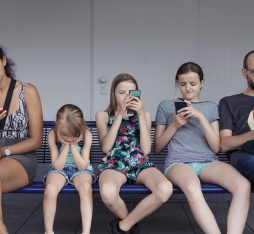We studied around fifteen platforms to observe how exchanges operate in practice, from the search for a product or service, to the transaction itself, to the post-transaction interactions. To help us in this task, we adopted a sociological definition of a market transaction, and in particular what distinguishes it from a gift or donation. Callon & Latour (1997) begin by pointing out that what defines a market transaction is the fact that it is set up as such: it is based not on propensity to calculate, which may vary from individual to individual and from society to society, but on the material and cognitive equipment that frames the exchange at the time when it happens. This having been established, they summarise the three characteristics that define a market transaction: it takes place between two strangers, or at least two individuals who treat each other as such; these individuals exchange a clearly defined product or service for a strictly equivalent sum of money; and, at the end of the interaction, as soon as that sum has been handed over, the individuals are all square. This definition provides a useful guide for understanding exchanges between consumers: how are the qualities and value of the goods and services constructed? Are the individuals quits at the end of the exchange, or do they form lasting bonds?
A clear, understandable supply and efficient interactions
The first point to note is that collaborative consumption exchanges are relatively standardised and are organised according to a classic market transaction model.
First of all, the sites make substantial efforts to organise all the goods and services offered by individuals into a clear, coherent, understandable and easy-to-navigate catalogue. They do this by offering providers significant guidance and support – prompting them to describe the key characteristics of their product or service, giving them advice on how to present adverts and supplying recommendations for taking high-quality photos, etc. Videdressing, for example, removes the background from photographs of items that will appear on the first few pages of its site, while Airbnb sends professional photographers to hosts’ homes.
Likewise, BlaBlaCar drivers insist strongly on the importance of clearly defining the departure and arrival points. The aim is to establish the parameters of the service precisely from the start and, insofar as is possible, to avoid requests for diversions, delays, etc. Of course, this initial establishment of parameters does not prevent participants from coming to other arrangements, granting favours or otherwise deviating from the transaction as initially planned. However, any such adjustments exceed the bounds of the market transaction relationship, in which what is to be exchanged is clearly defined in advance.
The platforms also establish coherent pricing systems. BlaBlaCar and Drivy suggest rules to help providers set their price based on the characteristics of their car, its age, etc. Videdressing, meanwhile, suggests the size of the discount users should give on the original price of their garments. When presenting the offers, the sites give prominence to the lowest prices and those closest to the platform’s recommendations (cf. Figure 1). For all the providers interviewed, this suggested price is the first element taken into account when setting their own price.

Figure 1 : BlaBlaCar’s pricing system
The final way in which the platforms attempt to guide and shape their use is by standardising interactions between providers and recipients, in order to make them more efficient and prevent their sites from being circumvented. Thus, most collaborative consumption platforms prohibit users from making contact with each other outside of the platform until the transaction is complete: phone numbers, email addresses, Facebook accounts, etc. are prohibited and deleted. For platforms, this not only prevents users from circumventing the site and its internal payment system, thus ensuring the platform gets its commission; it also simplifies interactions between users. Some tools developed by the sites even remove the need for any interaction prior to the transaction. BlaBlaCar, and then Drivy, have introduced automatic booking systems whereby the provider automatically accepts all bookings without having to approve requests manually. Rarely used and highly controversial when first introduced in 2011, “automatic mode” currently accounts for 75% of bookings on BlaBlaCar. Thus, users interviewed do not challenge the various limitations imposed on them. Indeed, they appreciate the tools provided, which make interactions with potential service recipients less onerous, minimise the number of questions they have to answer, and simplify meet-ups and bookings.
Efficient encounters?
The question of trust is crucial to the exchanges between individuals. The platforms provide a range of systems designed first to motivate new members to take the plunge and, more generally, to mutually reassure the partners in the exchange.
The first trust-building system is the insurance system provided by most sites (insurance for journeys made, for goods rented, right to return sold goods). Such cover is provided, in particular, for expensive goods such as cars, with both Drivy and OuiCar insuring the rented vehicle against damage and accidents. This does, however, impose a certain formal structure on the exchanges between providers and recipients, who must scrupulously apply the site’s rules if they are to be covered by the insurance in the event of a problem (identity checking, verification of the means of payment, signing of a rental contract, etc.).
Secondly, the platforms present themselves as guarantors of the exchanges and arbiters in the (rare) event of a dispute. This involves implementing incident reporting procedures which are available and manageable directly online, and ensuring that customer services teams are highly attentive to the specific cases of individuals, so as to avoid conflicts. It is also the reason why online payment is promoted by platforms as a guarantee of a fluid transaction, secured by the platform and placing a greater onus on partners to honour their commitments (on BlaBlaCar, for example, the number of “no-shows” was reduced as soon as passengers were given the option of prepaying for their journey at the time of booking).
Finally, the sites offer classic reputation systems based on ratings and reviews, through which participants evaluate each other and create public evaluations of users. On BlaBlaCar and Drivy, in particular, abundant use is made of these systems, and the ratings given are often high. But evaluation only comes into play when everything has gone well. Conventionally, users who have an average experience prefer to avoid evaluating it. When things have gone badly (a no-show, an unpleasant interaction, etc.), they do not post a negative review lightly, and when they do so, they are careful to keep it factual and properly backed up. Such trust systems, which are relatively similar from one platform to the next, go some way towards explaining the success of these sites and the specificity of transactions.
The analysis of the interviews with users suggests that the promises of a radical transformation of economic exchanges by putting private individuals in contact with one another should be viewed with a touch of caution. We observed significant heterogeneity of practices that lies in the way the platforms frame interactions but also in the nature of the goods and / or services exchanged. A ride in a car, cohabitation between the owner of apartment and a traveler, sharing a meal at home are all market transactions that users perceive as more enchanted than simply mailing a second hand good to an applicant whose name she will never know. Sharing a moment together and penetrating into another’s private space today seem two strong markers of the transfiguration of these transactions in an enhanced market relationship. But beware, users interviewed all agree that these meetings are often held at market purposes and that the meetings are often short-lived. Therefore, if collaborative consumption does not produce friendships, it nourishes a more “friendly” economy. This invites us to re-examine the conventional customer-vendor relationship… perhaps a new source of inspiration?











